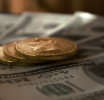The Rise and Fall of Traders: A True Story in Historical Context

The Rise and Fall of Traders: A True Story in Historical Context
Financial market trading has always been associated with impressive success stories of dizzying and crushing success. These stories are not only the talk of the town, but also a critical layer of financial culture, etched into the history of stock markets.
Historical Events
The Great Depression (1929–1954) – the Dow Jones fell 12% in one day, only to return to its previous levels 25 years later. Jesse Livermore made millions in the market crash, but later lost everything.Black Monday (1987) – the Dow Jones fell 22.6% in a single session, with losses for all participants in the index amounting to billions.
The dot-com crisis (2000) – NASDAQ initially rose 70%, then crashed 70%, destroying ten companies; the remaining two went on to become modern giants (Amazon, eBay).
Flash Crash (2010) – the market fell 10% in a minute and immediately recovered, due to an algorithmic error. Trader Navinder Sarao earned $50 million and was released from house arrest.
These examples are not only vivid illustrations of successes and failures, but also a reminder of the need for discipline, risk management, and cold-blooded calculation in the market. The market does not forgive overconfidence!

The Rise and Fall of Traders: A True Story in Historical Context
Timeless Lessons of Wall Street: Historical Models
Jesse Livermore – The Rise and Tragedy of the Great CopperJesse Livermore, nicknamed "The Great Copper," became a symbol of both phenomenal success and literary tragedies. In 1907 and 1929, he made his fortune during the market crashes, with declines accelerating during the most difficult moments in history. His profits after the 1929 crash exceeded $100 million – adjusted for inflation, that's nearly $1 billion by today's standards. However, a series of tragic events and, ultimately, financial missteps led Livermore to bankruptcy and a tragic end—his life ended in suicide, becoming a symbol of the dangers of emotional overload in the stock market.
Paul Tudor Jones: Navigating Crises
Paul Tudor Jones, the legendary hedge fund manager, made his fortune speculating in the 1980s but nearly lost it all due to incorrect bets in the bond market in 1986. His fund lost 19% of its capital, and many skeptics believed his trading career was over. But Jones recovered, developed his famous risk management principles, and is today considered one of the leading figures in modern economics.
John Rusnak: Catastrophe and Prison
One of the most instructive crashes of the 20th century is the story of John Rusnak, a trader at All First Financial. Initially, Rusnak proposed his aggressive deal, but over the years he began to hide the consequences, and his "all-in" approach began. When a nearly $700 million hole was revealed in 2001, Rusnak was convicted and sent to prison. Today, he has started a new life, but the story of his downfall is a reminder of the consequences of increased transparency and oversight.
Success
George Soros earned over $2 billion in a month in 1992, capitalizing on the fall of the British pound. Soros took on a large amount of debt and traded it for German marks—a position that rocked Britain, and Soros was dubbed the man who "broke the Bank of England."Bruce Kovner, who started out with credit money, earned $300 million in 1987, and his investment company, Caxton, became one of the most profitable funds in the world.
Stanley Druckenmiller, who participated in the "Black Wednesday" (the collapse of the pound) with Soros, and also successfully speculated on German reunification, earning a 40% return on a $100 million portfolio.
Andy Krieger, who opened a huge position against the New Zealand dollar (Kiwi) in 1987, exceeding the money supply of the entire country. His earnings are over $1 million for developing just one.
Linda Bradford Raschke - After losing $80,000 on City Service options, she not only recovered but also became one of the most famous futures market traders in the US, developing her own successful short-term trading dynamics.
Bill Lipschitz - From a $12,000 inheritance, he grew to $250,000. I lost almost everything in Forex due to a mistake, but I learned discipline and eventually became one of the best currency traders in the world.
Collapse Stories and Lessons
Nick Leeson (Barings Bank) — overconfidence and an attempt to "recoup" after the Kobe earthquake (1995) led to losses of $1.3 billion and the bankruptcy of a bank that had existed for over 200 years.The Hunt brothers (Silver Thursday) — repeatedly monopolized the silver market, borrowing heavily to buy the metal, resulting in a $2 billion liquidation and collapse, having remained in debt for over 8 years.
Yasuo Hamanaka ("Mr. Copper," Sumitomo) — controlled 5% of the global healthcare market, manipulated financial reports, suffered a $2.6 billion loss, and received a 7-year prison sentence.
John Meriwether (LTCM) — blind faith in a mathematical strategy and overleverage led to the collapse of the fund, with debt reaching $125 billion. $4.7 billion in capital; LTCM was saved only by the intervention of the Federal Reserve.
Lee Quibing – In 2005, he lost approximately $1 billion due to gambling on medicine; his scam is considered one of the most high-profile in Asia.
Brian Hunter (Amaranth) – Aggressive trading in gas futures led to a loss of $6.5 billion, and the fund went bankrupt.
Jérôme Kerville (Societe Generale) – By violating limits and transaction controls equivalent to the French budget, she lost $7.1 billion for the bank, received a prison sentence, and became a symbol of control.
Modern History: Hype, Crypto, and New Challenges
Bright Highs: Incredible SuccessesA cryptocurrency trader turned $2,137 into $3.24 million in 10 hours by investing in $HYPER tokens. Thanks to the timely profit, he subsequently purchased real estate in an elite Moscow neighborhood. However, he retained part of the asset, and its value subsequently fell 60-fold—a testament to the rapidly changing market.
There are known cases of traders like David Eicher making billions on currency declines thanks to his in-depth market analysis. Eicher made a billion on the collapse of the British pound in 1992.
Dramatic Falls: The Blows of Defeat
One of the most famous cases is that of crypto trader Peter McCormack:
Peter McCormack, host of a popular Bitcoin podcast ("What Bitcoin Did"), publicly spoke about his losses in crypto trading during the peak of the hype (around 2017).
He claimed to have become a millionaire trading cryptocurrency, but then lost almost everything (around $1 million).
The losses were often attributed to investments in various altcoins and ICOs during the 2017-2018 crisis.
His story underscored how easy it is to lose money in the speculative market, especially in the ICO space, where a truly huge percentage of projects (up to 90% or more) turned out to be "junk" or scams.
A Japanese trader lost $6 million on margin positions with 100x leverage—his market was wiped out in just a few minutes due to a sudden reversal. This is a remarkable example of the dangers of aggressive trading and overestimating one's natural abilities.
First Trade and Loss: On his first trade, Mark Weinstein lost $7,800 of his $8,400. This represented a loss of over 92% of his capital.
Trade Type: This was a long position (buy) in corn futures.
Reason: The position was opened on the advice (recommendation) of an analyst. Weinstein admitted that his mistake was in relying on someone else's opinion and not checking it out.
That strophic first trade became his foundation, after which he dramatically rethought his approach and developed his own disciplined trading dynamics, which ultimately led him to success as one of the "stock market wizards."
The most successful traders have experienced historic declines—it's precisely in these difficult moments that new knowledge and discipline often emerge.
Mistakes such as blindly following advice, ignoring risk, and overestimating one's own expertise are common among beginners and even experienced traders.
Stories of traders' rises and falls are not only analytical reading but also a colossal resource for analyzing sound decisions. They reveal: even elegance can begin with failure, and collapse often becomes a new step toward maturity in the market.
Psychological resilience, the ability to learn from mistakes, and a strict approach to risk management—these are the universal lessons these stories teach us.
The market always gives second chances to the prepared.
Reason: The position was opened on the advice (recommendation) of an analyst. Weinstein admitted that his mistake was in relying on someone else's opinion and not checking it out.
That strophic first trade became his foundation, after which he dramatically rethought his approach and developed his own disciplined trading dynamics, which ultimately led him to success as one of the "stock market wizards."
The most successful traders have experienced historic declines—it's precisely in these difficult moments that new knowledge and discipline often emerge.
Mistakes such as blindly following advice, ignoring risk, and overestimating one's own expertise are common among beginners and even experienced traders.
Stories of traders' rises and falls are not only analytical reading but also a colossal resource for analyzing sound decisions. They reveal: even elegance can begin with failure, and collapse often becomes a new step toward maturity in the market.
Psychological resilience, the ability to learn from mistakes, and a strict approach to risk management—these are the universal lessons these stories teach us.
The market always gives second chances to the prepared.
Written by Ethan Blake
Independent researcher, fintech consultant, and market analyst.
October 24, 2025
Join us. Our Telegram: @forexturnkey
All to the point, no ads. A channel that doesn't tire you out, but pumps you up.
Independent researcher, fintech consultant, and market analyst.
October 24, 2025
Join us. Our Telegram: @forexturnkey
All to the point, no ads. A channel that doesn't tire you out, but pumps you up.









Report
My comments